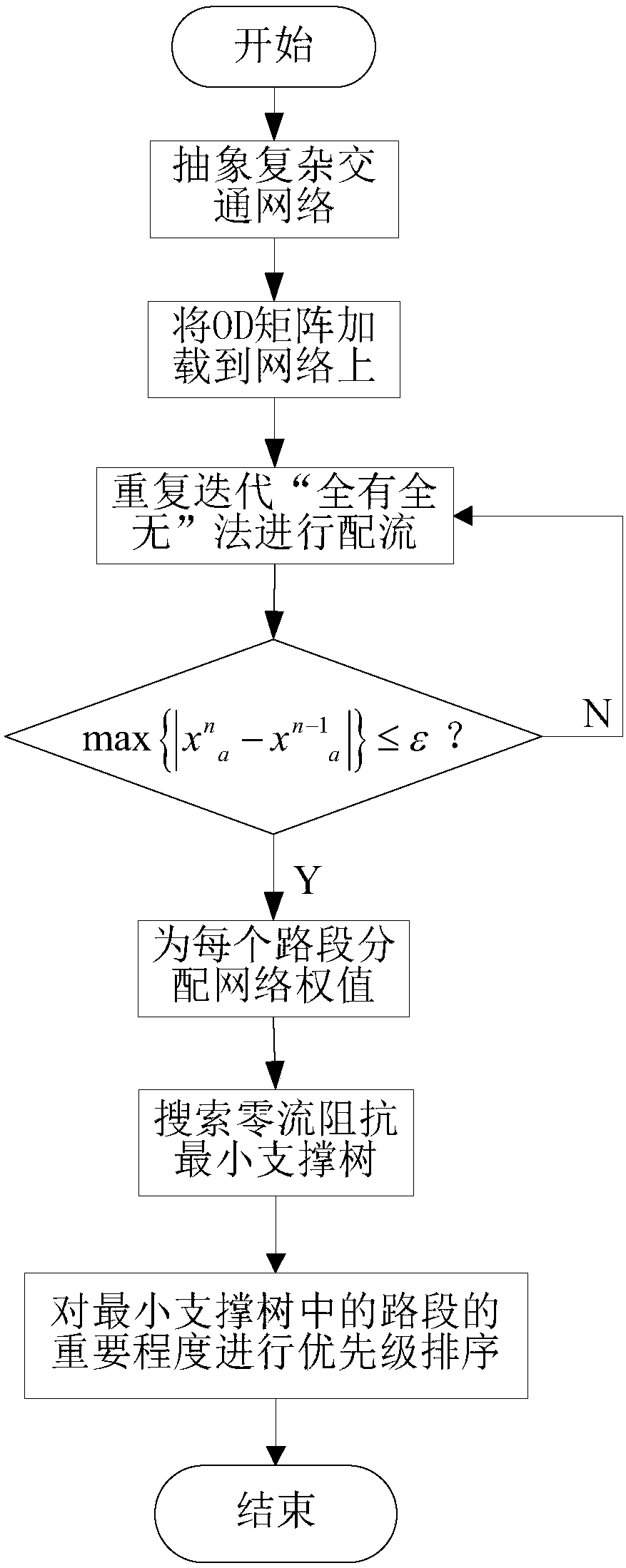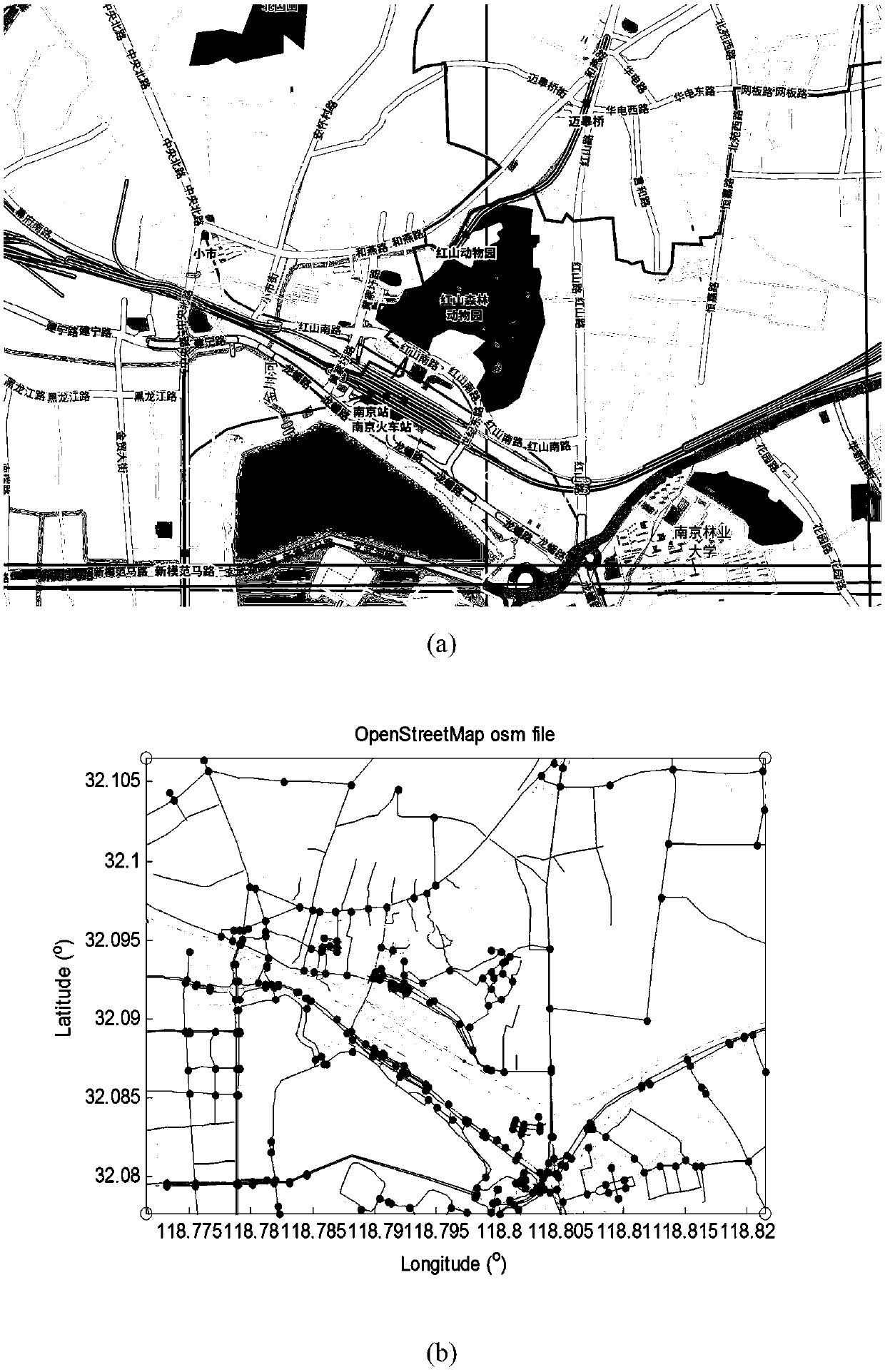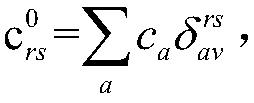Traffic Bottleneck Identification Method in Urban Traffic Network
A technology of urban traffic and identification method, which is applied in the traffic control system of road vehicles, traffic flow detection, traffic control system, etc., can solve the problem of lack of road system planning and traffic facilities, can not reflect the characteristics of road network traffic flow well, Inapplicable and other problems to achieve the effect of improving traffic congestion
- Summary
- Abstract
- Description
- Claims
- Application Information
AI Technical Summary
Problems solved by technology
Method used
Image
Examples
Embodiment Construction
[0036] The implementation steps of the present invention will be further described in detail below with reference to the accompanying drawings.
[0037] refer to figure 1 , the implementation steps of the present invention are as follows:
[0038] Step 1: Abstract the network topology and store it in the form of a matrix.
[0039] The network topology used in this example is as follows figure 2 shown, where, figure 2 (a) is the road network topology near Nanjing Railway Station in the actual scene, figure 2 (b) is the road network topology abstracted by mathematical tools.
[0040] 1a) Extract from OpenStreetMap editable world map using MATLAB tools figure 2 (a) The network topology data of the corresponding area, including the latitude and longitude of the road intersection, the length of the road and the width of the road. According to these data, the actual network topology is abstracted into an undirected weighted graph G=(V, K, t), such as figure 2 (b), where V...
PUM
 Login to View More
Login to View More Abstract
Description
Claims
Application Information
 Login to View More
Login to View More - R&D
- Intellectual Property
- Life Sciences
- Materials
- Tech Scout
- Unparalleled Data Quality
- Higher Quality Content
- 60% Fewer Hallucinations
Browse by: Latest US Patents, China's latest patents, Technical Efficacy Thesaurus, Application Domain, Technology Topic, Popular Technical Reports.
© 2025 PatSnap. All rights reserved.Legal|Privacy policy|Modern Slavery Act Transparency Statement|Sitemap|About US| Contact US: help@patsnap.com



